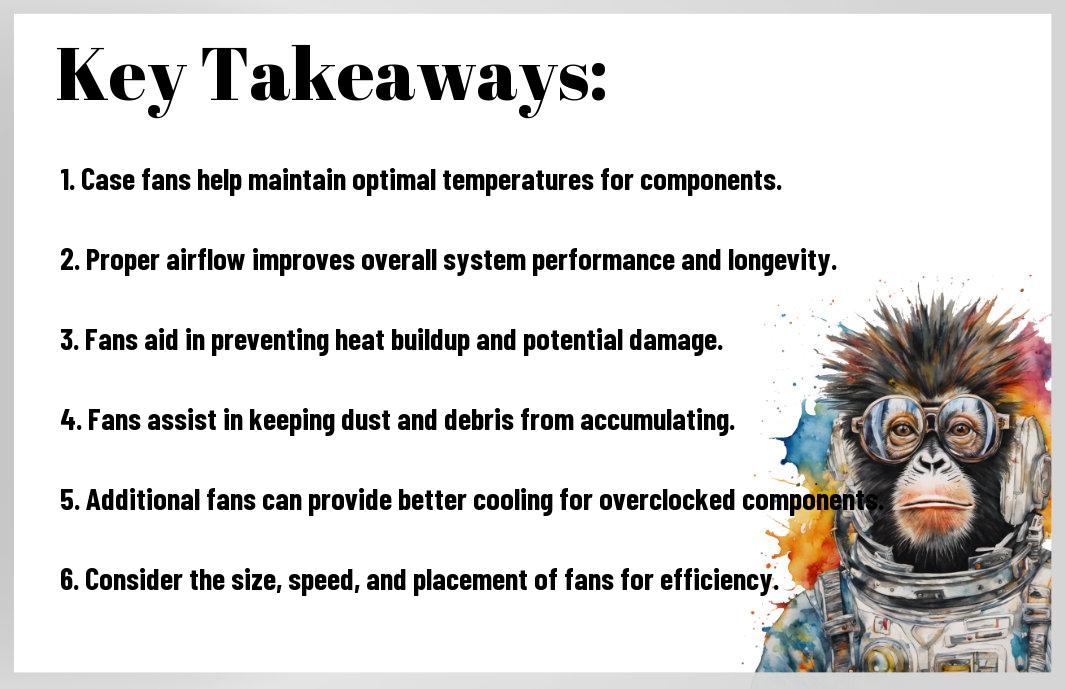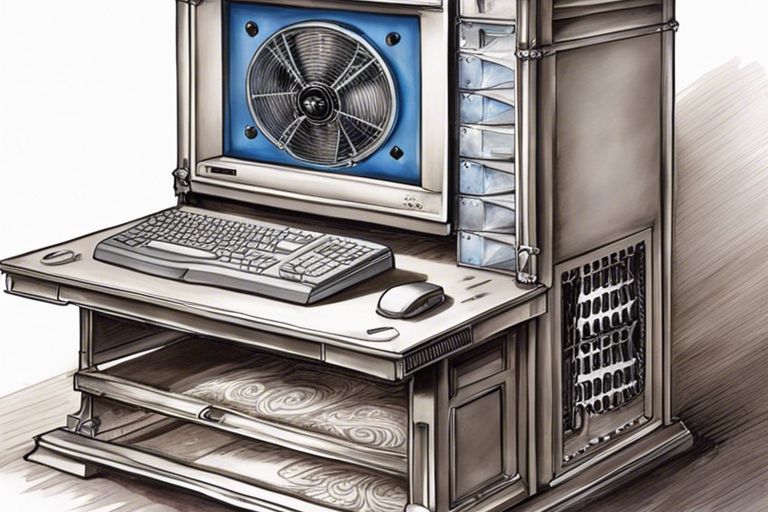Fans, let’s talk about the real deal when it comes to your PC’s performance – proper airflow. You might be thinking, are case fans even necessary? The short answer: yes. Here’s the deal – without adequate airflow, your components can overheat, leading to decreased performance, system instability, and even permanent damage. So, if you want your PC to run smoothly and have a longer lifespan, investing in case fans is a no-brainer. Let’s dive deep into the world of proper airflow and why case fans are a non-negotiable part of the equation.
Key Takeaways:
- Proper airflow is crucial: Ensuring that your components stay cool is important for optimal performance and longevity.
- Case fans help maintain airflow: They help circulate cool air throughout the case and dispel hot air, preventing overheating.
- Your setup may determine the necessity: Depending on the components and configuration of your system, case fans may or may not be necessary.
- Consider the ambient temperature: If your PC is in a warm environment or gets hot frequently, case fans can help maintain a steady temperature.
- Regular maintenance is key: Proper cleaning and maintenance of case fans are important to ensure they continue to operate effectively in maintaining airflow.

The Role of Case Fans
Understanding How Case Fans Work
The key role of case fans is to improve airflow within your computer system. By strategically placing fans throughout the case, you can ensure that cool air is brought in while hot air is pushed out. This circulation helps regulate temperatures and prevents overheating, which can damage your components.
The Impact of Case Fans on System Health
Case fans play a critical role in maintaining the health of your system. Proper airflow can prevent your components from overheating, which can extend the lifespan of your hardware. It also reduces the risk of performance issues that can arise from running components at high temperatures for extended periods.
To Fan or Not to Fan
Assessing Your Cooling Needs
After investing in a high-quality computer, assessing your cooling needs is crucial. Consider the size of your PC case, the components inside, and the tasks you’ll be performing on your machine. If you’re running high-intensity programs or games that generate a lot of heat, having proper airflow is important to keep your system running smoothly.
Alternative Cooling Strategies
On the other hand, some users may opt for alternative cooling strategies to manage their system’s temperature without traditional case fans. This can include liquid cooling systems, heat sinks, or ensuring proper ventilation in the room where the computer is located.
This doesn’t mean case fans are obsolete – they still play a crucial role in maintaining optimal temperatures inside your computer. Proper airflow generated by strategically placed fans can prevent components from overheating, which can lead to performance issues, hardware damage, and even system failure. However, in some cases, alternative cooling solutions may be sufficient depending on your setup and usage habits.
Maximizing Case Fan Efficiency
Placement and Direction: A How-To Guide
Once again, let’s talk about the importance of proper placement and direction of your case fans. To ensure optimal airflow, it’s crucial to position your fans strategically within your case. Front and bottom fans should intake cool air, while rear and top fans should exhaust hot air. This creates a clear path for air to flow efficiently through your system, preventing heat buildup and promoting better overall cooling.
Fine-Tuning: The Art of Fan Speed Control
To maximize the efficiency of your case fans, you need to master the art of fan speed control. By adjusting the speed of your fans, you can customize airflow based on your system’s needs. This level of control allows you to balance performance with noise levels, ensuring your components stay cool without creating unnecessary racket.
Case fans play a crucial role in maintaining proper airflow within your system. By fine-tuning their speed, you can optimize cooling performance while keeping noise levels in check. It’s crucial to monitor your system’s temperatures and adjust fan speeds accordingly to ensure optimal performance and longevity of your components.
To wrap up
From above stats, it’s clear that case fans are indeed crucial for maintaining proper airflow within your system. Don’t overlook the significance of these components as they play a vital role in keeping your hardware cool and functioning efficiently. It’s all about creating that optimal environment for your components to thrive and perform at their best. So, make sure to invest in quality case fans and keep them well maintained to ensure your system stays cool and reliable. Bear in mind, proper airflow is the key to a happy and healthy PC setup!
FAQ
Q: Do I really need case fans for proper airflow in my PC?
A: Absolutely! Case fans play a crucial role in maintaining proper airflow inside your PC, keeping components cool and ensuring optimal performance.
Q: How many case fans should I have in my PC?
A: The number of case fans you need depends on your PC’s configuration and cooling requirements. Generally, having at least two fans – one intake and one exhaust – is recommended for most setups.
Q: What is the difference between intake and exhaust case fans?
A: Intake fans bring cool air into the case, while exhaust fans expel hot air out of the case. Having a good balance of intake and exhaust fans is imperative for efficient airflow management.
Q: Can I use liquid cooling instead of case fans for airflow?
A: Liquid cooling can be more effective at cooling your components than traditional case fans, but it’s still important to have adequate airflow in your case to prevent hot spots and ensure overall system stability.
Q: How can I optimize airflow in my PC case?
A: To optimize airflow in your PC case, make sure to position your fans strategically for good air circulation, keep your components clean to prevent dust buildup, and consider using fan controllers or software to manage fan speeds based on temperature.

![VALORANT $10 Gift Card - PC [Online Game Code]](https://m.media-amazon.com/images/I/41IGhWA1O6L._SX300_SY300_QL70_ML2_.jpg)

